 I swore that I’d never again run a marathon. The distance is arbitrary and cruel. Pavement is hard. Three times I did that. Ottawa in 2009 was a particularly notable failure in which I struggled. When it comes to running marathons, I call myself a pretty good half marathoner.
I swore that I’d never again run a marathon. The distance is arbitrary and cruel. Pavement is hard. Three times I did that. Ottawa in 2009 was a particularly notable failure in which I struggled. When it comes to running marathons, I call myself a pretty good half marathoner.
Despite all of that, I signed up for the Philadelphia Marathon this year to run with my younger brother Vince the Ironman. He planned to run the Marathon and suggested I do the Half Marathon at the same time. I figured that going all the way to Philadelphia could only be justified by running the full distance. So on Labour Day weekend I put down my $125US and predicted a 3:45 finish time. Older brother Kevin also joined in with an entry in the Half Marathon to make it three Dale brothers in the event.
Training notes
I had less than three months to get ready. I knew that was a bit less than is ideal, but figured it was doable after running fairly consistently over the summer. A few minutes on the internet turned up a twelve-week training plan originally published in Runners World which caught my eye (http://www.runnersworld.com/article/0,7120,s6-238-244–9215-1-1X2X3X5-5,00.html). The plan seemed to put less emphasis on long slow runs, and more emphasis on long intervals at marathon or tempo pace, to train the body to handle race pace. Some long runs were progression runs in which the pace increases gradually in the last 40 minutes to reach goal marathon pace. As it happened, the first long run in the plan at the end of week one coincided precisely with a comfortable 21 km run in Ottawa the day after the Canadian Sprint Duathlon on the Saturday of Labour Day weekend (see report at https://www.teamrunningfree.com/blog/2010/09/13/canadian-sprint-duathlon-ottawa/). So that’s where I started, at the end of Week #1.
As the weeks progressed after Labour Day, I was confident that this program was achieving its purpose. I settled on training paces of 5:00 min/km for goal marathon pace, 5:30 for long runs, and 4:45 for tempo efforts. I adjusted the plan slightly to include the Toronto Half Marathon on October 16 which I turned into a 28km progression run. I planned on topping out at about 70 km per week total.
By the end of October, I was nailing the long interval workouts of up to five times two or three miles at marathon pace with a half mile of recovery between intervals. (Note: I went old school with this plan for running a U.S. race and measured miles for distance on my Garmin 310, even though I still tracked pace in min/km). Long runs were comfortable, and the common problem was to not run faster than the prescribed training pace. With the exception of a couple of weeks in the middle of the plan, I completed most of the key interval workouts and all but one of the planned long runs.
Philadelphia
Other than a boyhood dislike of the 1970s-era Flyers, the first Rocky movie, and some rudimentary knowledge of U.S. history, I didn’t really know much about Philadelphia. My visit was entirely positive. I described it as like Toronto with more people on the street, and better architecture. Stroll down Broad Street South to see some great early twentieth century skyscrapers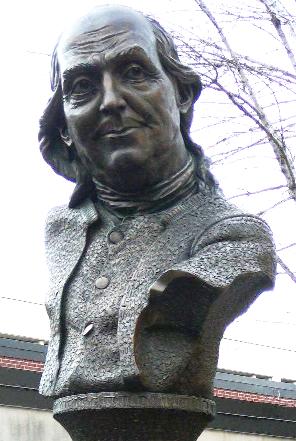 .
.
As a tourist in Philadelphia, the first thing you learn is that Ben Franklin is the answer to every other question. Whether it’s a road, bridge, house, grave, he is everywhere. I even saw where his outhouse used to be.
Not surprisingly, the marathon connects some of the abundant attractive areas of the city including the Old City historical district, University City, Fairmount Park and then Schuylkill (“skool-kill”) River.
Mind you, race organizers and city officials build races around mostly the nice areas that they want you to see. To get a different perspective, I took a ride to West Philadelphia on the Tuesday morning post-race on the subway/elevated train. Some of the bleak views from the train were not in the tourist brochures.
Race Day
A perfect race day requires a combination of training, planning and luck. I did as much as I could in the two weeks before the race to complete the last planned workouts, taper, and eat and sleep well. Unluckily, I felt a little bit ill with an unsettled stomach during the two days pre-race. I woke up on race morning feeling better, but still not 100%.
We had to rely on the hotel’s limited 5:00 am breakfast buffet for runners and I had a small bowl of cheerios, yogurt drink and banana. Combined with a powerbar during the ride to the start, that was my pre-race fuel. I missed my ideal pre-run breakfast of Scottish-style porridge.
We had no problem hailing a cab to the start area and were in position by 6:15 am. The start/finish area for the combined Marathon and Half Marathon is on the expansive Benjamin Franklin Parkway just south of the Museum of Art (site of the Rocky Steps). After some standing and sitting around, we dropped off our bags at UPS trucks, well-marked by surname which was a nice efficient set-up. The weather for race day was ideal with cool and calm conditions at the start, just minutes after sunrise.
This race gets top marks for an efficient and orderly starting line. The Marathon and Half Marathon had approximately 17,000 racers, assigned to colour-coded waves by predicted starting times. My estimated 3:45 finish time put me in the green wave, three waves back from the elite starters. For reasons that I can’t recall, the Ben Franklin Parkway is lined with the flags of all countries. Good vibes came from the fact that the green wave was corralled under the Kenya flag.I had been tempted to move up one wave based on my training, as I planned to run with an ambitious 3:30 goal to see whether I could hold a 5:00 min/km pace. The green wave was 3:30:01 to 3:45 so I stayed where I was. By race day, brother Vince had dropped down to the Half Marathon, and also dropped back one wave from his assigned spot to help pace me through the first half of the Marathon course. Kevin was farther back to start his fourth Half Marathon.
Seven minutes after the first runners went off, our wave was brought up to the start line and soon we were off. The first couple of miles were comfortable and fast through downtown to the Old City and along the Delaware River. Vince helped me to control my pace in the early miles when it felt easy to run fast. About three miles in, a serious twinge developed in my left calf. That was unusual and probably resulted from standing around for a while before the start with no pre-race warm-up run to get loose. I made a quick stop to stretch it out and the problem mostly disappeared. I caught up to Vince and we continued on at my goal pace, and while the pace didn’t feel difficult, my stomach was still unsettled.
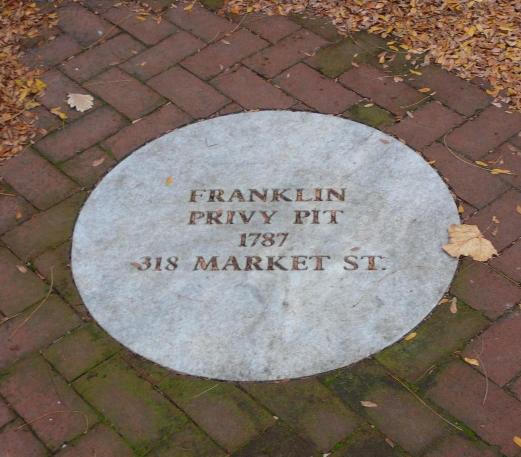 Between mile markers 4 and 7, the course returns from the banks of the Delaware River through the older parts of the city, past Independence Hall, the Liberty Bell and various other historical sites. Impressive crowds of vocal spectators lined the downtown streets, even before 8:00 am. Vince dropped back during this stretch when he had to pause for a pit stop.
Between mile markers 4 and 7, the course returns from the banks of the Delaware River through the older parts of the city, past Independence Hall, the Liberty Bell and various other historical sites. Impressive crowds of vocal spectators lined the downtown streets, even before 8:00 am. Vince dropped back during this stretch when he had to pause for a pit stop.
My timed 10 km split of 49:58 was bang on my goal pace.
Before the race, I had briefly considered the elevation profile for the race which showed a couple of small bumps around miles 6 and 9. Early in the race, I overheard some local runners trading advice about how to handle the hills on 34th Street and I started to get a bit apprehensive. Sure enough, there were some moderately challenging hills along 34th Street, past the Zoo and up to the Avenue of the Republic where the American Centennial was celebrated at a huge exhibition in the 1870s.
Somewhere on 34th Street, Vince caught up with me again. He soon went out in front. I kept him in sight and followed his line to cut the tangents and avoid extra distance on the course. Between mile markers 10 and 11, the Marathon course descends steeply to the banks of the Schuylkill River for the return to the Museum of Art. I last saw Vince around this time as he picked up the pace to finish his Half Marathon.
In the couple of miles before the split between the Marathon and Half Marathon courses, the race was starting to feel more like work. Up to this point, my average pace was still under 5:00 min/km, but it was creeping upward. My stomach was not really settling down which made it tough to push the pace. As well, pre-existing right leg issues began to bother me. I passed 13.1 miles in 1:46:32, or about 5:03 min/km average.
At the halfway mark, the Marathon course takes a left turn to follow a scenic riverside parkway along the Schuylkill, interrupted briefly by an unwelcome diversion to the other side of the river to add on some distance. This is a nice course.
My pre-race mental plan was to get to the turnaround at 20 miles in the town of Manayunk. From that point, the course map showed a downriver return all the way to the Museum area, and I focused on an image of an easy, pleasant run to the finish.
In reality however, I struggled with some modest rolling hills going into Manayunk before the turnaround. Some of the abundant race fans were handing out shots of beer which I reluctantly declined. During the race, I took in three Roctane gels and a regular GU gel which I had with me, plus one or two more GU gels from the aid stations. By the end of the race, the gels weren’t really filling a growing hunger void and in retrospect, the beer likely could have done no harm during the last six miles. My timed 30 km split was 2:35, meaning my average pace had slipped further, to 5:10 min/km.
My memory of the last several miles is a lot of spectators calling out to runners by name which provided some much-needed encouragement. The weather remained ideal, and I was still comfortable in a light, long sleeved shirt and singlet. There were some tough miles on the return to Philly, as I found it tough to sustain a steady pace with a sore right foot which forced some stops for stretching and adjusting.
Thankfully, the spectators were relatively constant on the run back to keep me honest, and the crowds built steadily on the approach to the Museum of Art. A nice downhill slope to the finish line was a welcome sight.Like the rest of this event, the finishing area was well organized. Bag pick-up was easy and most importantly didn’t require any extra walking. A food bag contained big soft pretzels which was different. After some recovery drink from my bag (Hammer Recoverite I think) and a change of clothes, I felt much better and after some effort I located Vince and Kevin, both of whom I thought looked worse than me.
Reflections
My 3:46:43 finish was not far from the 3:45 that I predicted at registration, though I was disappointed that I slipped so badly from my ambitious pace in the last six miles. Despite that disappointment, it was a PB by eight minutes.
Not including race week, my weekly run totals were 40, 41, 48, 41, 73, 57, 44, 57, 60, 66 and 44 km’s on three, four or five runs per week plus some limited bike days. On reflection, those totals didn’t provide enough leg strength to handle the long grind of a marathon. I was aware going into the race that I could have benefitted from another month of training, including another long run in the 30 or 35 km range.
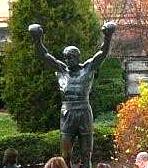 I’ve defined marathon success for me as someday running the distance around 3:30. That goal is within reach but will require a longer build-up, more runs per week and a higher weekly run volume.
I’ve defined marathon success for me as someday running the distance around 3:30. That goal is within reach but will require a longer build-up, more runs per week and a higher weekly run volume.
Most importantly, and unlike previous marathons (and in particular unlike Ottawa in 2009) I didn’t cross the line at Philly with a conviction that I would never again run a marathon.
I might well return to Philly another time to see what happens on the same excellent course





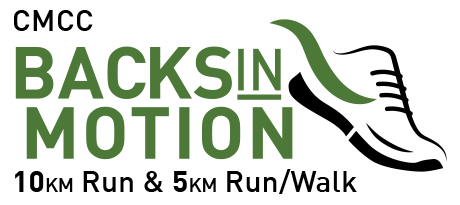



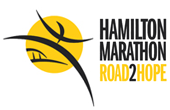

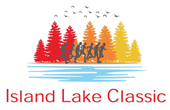

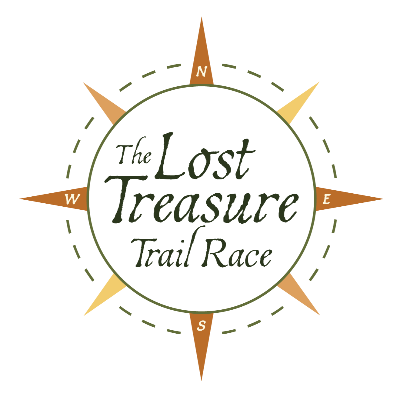



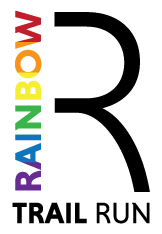



Nice work Anthony. Good seeing out there during the Angus Glen race. Best of luck with that 3:30. It can and will be done.